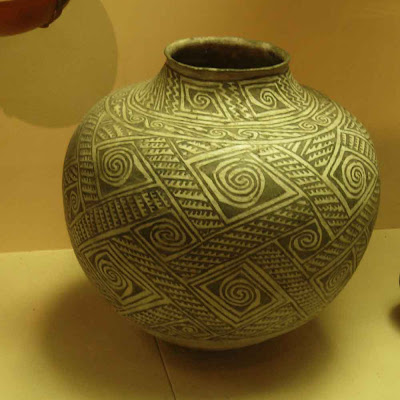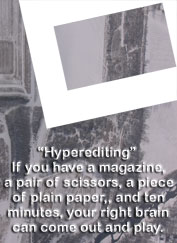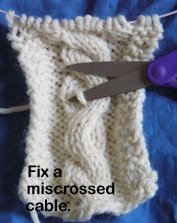UPDATE: Aug. 7, 2012 at the bottom of this post.....
I have been enjoying the Urban Sketchers' work. So many different excellent ways to sketch.....
Here are some urban sketchers, working in Reading Terminal Market.
As another attempt to avoid the heat, I chose the Penn Museum of Archeology and Anthropology.
I was half successful. It is large, and has a SPECTACULAR collection. It was certainly "enough" to keep me happy and interested for as long as my brain could keep going.
Unfortunately, it is not air conditioned.
It never occurred to me that was an issue.......................
It was hot, it was hotter, and it was even hotter. Sigh, and alas.
This was the farthest from the hotel I had ventured. I took a weird trolly/bus thing that ran deep underground like a subway (but it was one car, with driver). It took me to very near Penn, and I walked a few blocks to the museum.
It doesn't look that big, but it's very big.
I'd never seen such a fancy brick facade.
Fancy brick-laying, and lots of broken (cut?) pieces of brick, and I don't even know what to call the white and blue bits in this next image. Perhaps it's ceramic, but I can't really tell.....
The people who worked on this did a wonderful job.
It took me a while to figure out that there was basically, seriously, no air conditioning.
When I looked at these pots, I was still thinking the heat was anomalous, rather than reality's sad truth.
This was the first thing I saw that really started me down the path of figuring out how amazing their collection is. This is an mesoamerican stone "belt." Here is the one that is in the British Museum, and in A History of the World in 100 Objects.
That got me thinking. "If they have the same sort of thing that is in 100 Objects"........
Alas I did not capture the info with the stone "belt."
Nor the info about this excellent rabbit.....
This one I got: "Yucatan, Maya, AD 800"
Love the shape of this gourd vessel.
Once upon a time, I lived in a large apartment building. There were many foreign students in that building. At times when people moved out of the building, a lot of people threw out A LOT of stuff. I began to haunt the trash rooms when people moved out. I never bought laundry detergent, scouring powder, or towels, for years.
I own something that I would bet is one of these next objects, found in the trash back then. Mine isn't nearly as elaborate, but it has the concave face, the metal wrapping, and the diamond shape at the bottom. Mine actually looks quite a bit like this, if you leave off the head-dressy stuff behind the face............... (Mine also has a bit of damage at the bottom from a time when one of the dogs decided to gnaw on it.....)
If Antiques Roadshow ever comes near enough that I go, my sculpture is something I would take to have evaluated.
Cute little stripey jar. This was about 3" tall.
See the little stripey jar, over on the right, above that vessel with the red stripes?
Now look at that BIG jar on the left. Wow.
Love the decoration on the big jar.....
And now for something completely different............ I guess this is what genius is. Coming up with such an elegant and brilliant solution to a problem...........
This is a fibula -- an ancient Greek broach used to fasten garments. Think of it as being very like an ancient safety-pin. A pointy pin part, which stabs through the fabric, a spring, which allows the pin to open and which holds it closed, then a part that is visible outside the cloth and which ends in something to hold the pointy end of the pin, keeping it shut and stopping it from stabbing the user.
I loved its shapes and its shadows, which is why I took the pic.
I'd been idly puzzling over WHY the loose rings were on the pin-part (which, presumably, would be behind the cloth). Then I noticed that the rings are plenty big enough to go over the spring-part (at right, on the plexiglas holder-upper thing).
I think it's upside down. I think the rings must have been on the fatter part, where they'd be outside the garment, on the fancy part of the fibula. Where they'd be loose and jangle when the wearer moved, rather than all jammed up against the garment, the way they would be if they belonged on the pin.............
Hard to imagine I'm right. Surely a place that has treasures equal to those in the British Museum knows a lot more than I possibly can about how their objects were used. But this display makes no sense at all to me......
Fingers ... itching ... to rotate that thing 180 degrees on that plexiglas holder upper, so it's displayed as (surely!) it must have been worn. With the skinny pin invisible behind the cloth, and the fat part (and rings!) hanging down, visible and musical, on the garment.
Hmmm. There are a lot of images of fibulae online. Not one of the ones I saw has rings hanging loose like this.
Now I'm wondering if the rings even belong on the fibula at all............
A mystery...............
UPDATE: Aug. 7, 2012 Who knew that the Penn Museum was listening to the ignorant comments made on random people's blogs! Not only listening, but responding!
In response to your fibula question, here is what our Etruscan curator, Jean Turfa
(http://www.sas.upenn.edu/aamw/faculty/#Turfa), had to say about the proper use of fibulae:
"Heavy bow-downwards is the most efficient, but no, there is no wrong way to wear these fibulae, apparently: in our case (Etruscans and Faliscans), cremation ritual means we do not see the items positioned on a body - they were reserved except for some modesty pins left in place for the cremation, and most jewelry was added to the tomb after the urn was filled. Burials in the southern part of the peninsula show various ways of attaching fibulae, and the famous Daunian stelai of the Iron Age/Archaic period that are in the form of a standing, robed woman, usually show fibulae worn bow-up, or slightly slanting... the pendant items that we find in the tomb-offerings may have been afterthoughts, loose parts of the possessions simply attached together for convenient display, and not actually pinned onto the garments...
and the museum case opposite the one with the fibula + rings has the ornamental miniature cheese grater hanging from a fibula like a military medal: it can only have hung from the pin (because of the way it attaches), so perhaps it was not pinned onto her dress, but hung from something else - if indeed she wore it in life, and it was not carried on a pillow in her funeral, that kind of thing. So I guess variety is the keyword for Iron Age fibs!"
(http://www.sas.upenn.edu/aamw/faculty/#Turfa), had to say about the proper use of fibulae:
"Heavy bow-downwards is the most efficient, but no, there is no wrong way to wear these fibulae, apparently: in our case (Etruscans and Faliscans), cremation ritual means we do not see the items positioned on a body - they were reserved except for some modesty pins left in place for the cremation, and most jewelry was added to the tomb after the urn was filled. Burials in the southern part of the peninsula show various ways of attaching fibulae, and the famous Daunian stelai of the Iron Age/Archaic period that are in the form of a standing, robed woman, usually show fibulae worn bow-up, or slightly slanting... the pendant items that we find in the tomb-offerings may have been afterthoughts, loose parts of the possessions simply attached together for convenient display, and not actually pinned onto the garments...
and the museum case opposite the one with the fibula + rings has the ornamental miniature cheese grater hanging from a fibula like a military medal: it can only have hung from the pin (because of the way it attaches), so perhaps it was not pinned onto her dress, but hung from something else - if indeed she wore it in life, and it was not carried on a pillow in her funeral, that kind of thing. So I guess variety is the keyword for Iron Age fibs!"
The more I know about the Penn Museum, the more impressed I am! Getting a response like this from a world-class museum..... Wow. Very cool.
If you are ever anywhere near the Penn Museum, and have any interest at all in art objects, or history, or historical objects, you will be doing yourself a favor if you spend time there!
.






































2 comments:
Hello! We're sorry about the lack of air conditioning in the galleries. Some galleries have AC but most are pretty darn balmy. We're glad you enjoyed your visit despite the heat!
In response to your fibula question, here is what our Etruscan curator, Jean Turfa
(http://www.sas.upenn.edu/aamw/faculty/#Turfa), had to say about the proper use of fibulae:
"Heavy bow-downwards is the most efficient, but no, there is no wrong way to wear these fibulae, apparently: in our case (Etruscans and Faliscans), cremation ritual means we do not see the items positioned on a body - they were reserved except for some modesty pins left in place for the cremation, and most jewelry was added to the tomb after the urn was filled. Burials in the southern part of the peninsula show various ways of attaching fibulae, and the famous Daunian stelai of the Iron Age/Archaic period that are in the form of a standing, robed woman, usually show fibulae worn bow-up, or slightly slanting... the pendant items that we find in the tomb-offerings may have been afterthoughts, loose parts of the possessions simply attached together for convenient display, and not actually pinned onto the garments...
and the museum case opposite the one with the fibula + rings has the ornamental miniature cheese grater hanging from a fibula like a military medal: it can only have hung from the pin (because of the way it attaches), so perhaps it was not pinned onto her dress, but hung from something else - if indeed she wore it in life, and it was not carried on a pillow in her funeral, that kind of thing. So I guess variety is the keyword for Iron Age fibs!"
Wow -- who knew that the Penn Museum was paying attention to the ignorant comments made on random people's blogs! :-)
Cool! :-)
I did enjoy my visit, even though it was SO hot that day. I would absolutely go back, but not on such a hot day.
Thank you for the additional information!
Interesting about the cremation, and the jewelry being added to the tomb later. That makes it a lot harder to figure out how things were worn!
Interesting, too, about the cheese grater being attached to the pin! I wish I could have a look at that, now that I'm thinking about all of this.
It certainly makes sense that if the whole point was decoration, rather than holding garments closed, the range of possibility for what attaches where would be different..... And fastening them for convenience, rather than function, really opens up all the doors, doesn't it.
I wonder about the depictions of the bow-up fibulae. Trying to understand how the bow would stay up? It seems like it would just go down from gravity, if the person were standing up?
Thanks again for the response! (And sorry for being slow -- our power was out.....)
Post a Comment